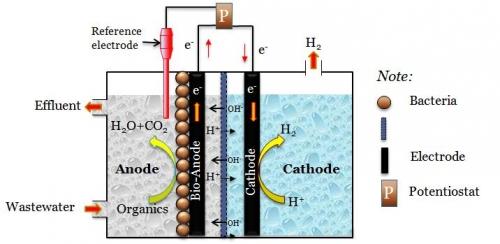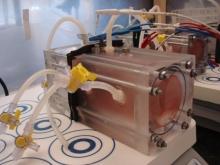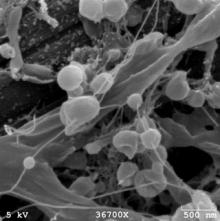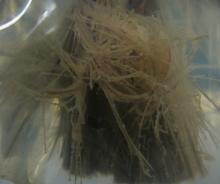Microbial electrochemical cells (MECs) are emerging biotechnologies that marry microbial metabolism with electrochemical cells. Several microorganisms are able to transfer electron from donor substrate to electrodes extracellulary [called extracellular electron transfer (EET)] via direct contact, shuttling compounds, conductive biofilm matrix, or combined mechanisms. When we utilize EET-microbes on the anode in MECs we can generate electric power, hydrogen gas, and hydrogen peroxide on the cathode from organic wastewaters.

Schematic diagram of microbial electrochemical cells for power generation. ARB: anode-respiring bacteria. AEM: anionic exchange membrane, and WW: wastewater.

The right photo shows MECs operated in a temperature-controlled box. The reactors are hooked up to a multi-channel potentiostat. These are sandwich-type MECs with anode chamber (pinkish color) on right-hand side and cathode chamber on left-hand side. Anion exchange membrane (AEM) is used to separate the two chambers.
To maintain high concentration of anode-respiring bacteria (ARB) in MECs is significant for accelerating current density, which decides MEC size. To scale up MECs, high current density is essential. Our group has used carbon fiber to increase ARB density in a given volume of MECs (Brownish color indicates ARB attached to black carbon fiber).

 Currently our group has focused on finding of kinetically efficient ARB, syntrophic interaction between ARB and fermenters, nitrogen recovery, hydrogen peroxide (H2O2) synthesis, biocathode for synthesizing higher value-added products, and combined processes of MECs and other anaerobic systems.
Currently our group has focused on finding of kinetically efficient ARB, syntrophic interaction between ARB and fermenters, nitrogen recovery, hydrogen peroxide (H2O2) synthesis, biocathode for synthesizing higher value-added products, and combined processes of MECs and other anaerobic systems.